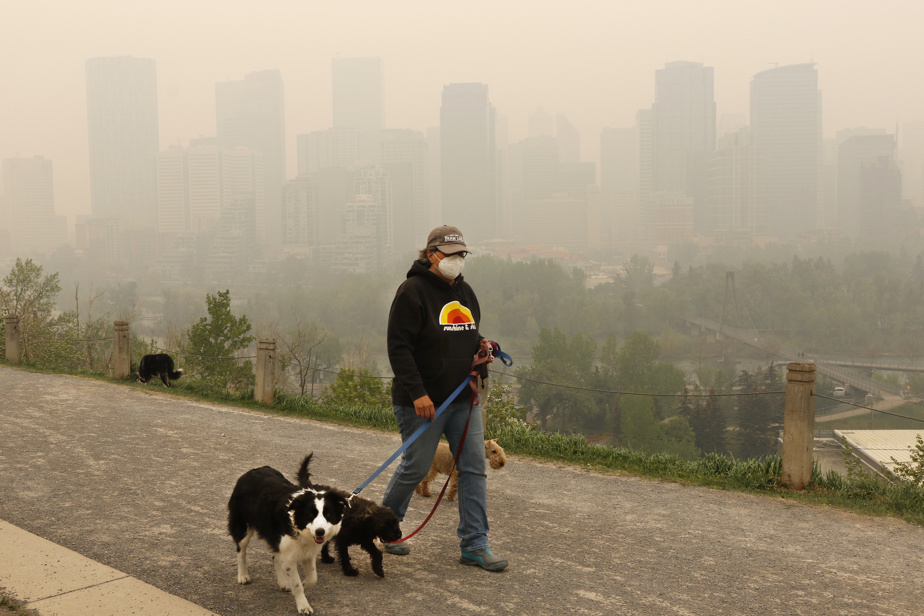Poor air quality warnings continued Wednesday for much of British Columbia and the Prairie provinces, as dozens of wildfires rage across that region of the country.
More than 19,500 people in Alberta had been forced from their homes as of Tuesday night as 91 active wildfires burned across the province, including 27 listed as “out of control.”
People forced to evacuate two weeks ago from the Drayton Valley area, 145 km southwest of Edmonton, have been allowed to return home.
There are approximately 2,500 people fighting wildfires in Alberta, including 300 military personnel. Reservists walked through smoldering trees near Drayton Valley on Tuesday before authorities partially lifted an evacuation order. Dressed in yellow coveralls with bright blue hard hats, they walked through trees, some reduced to matches.
Meanwhile, the city of Fort St. John in northeastern British Columbia, with a population of around 21,000, remained under an evacuation alert on Wednesday in response to a forest fire of more than 130 square km.
A change in wind direction still helped firefighters work overnight as they managed to stop two out-of-control wildfires from moving closer to Fort St. John.
The British Columbia Forest Fire Protection Service feared warmer conditions would arrive on Wednesday, as well as a problematic wind shift.
Service information officer Hannah Swift said the Stoddart Creek fire threatening the city is now estimated at 215 square kilometers, down from the previous estimate of 235 square kilometers on Tuesday.
Environment Canada says winds there shifted from the north to a more easterly direction, pushing both the Stoddart Creek fire and the smaller Red Creek fire away from towns.
In the Northwest Territories, the Indigenous community of K’atl’odeeche and the town of Hay River, about 120 km from the Alberta border, are still under evacuation orders.
There were also 27 active wildfires in Saskatchewan as of Tuesday evening.
Environment Canada also says smoke from wildfires in central British Columbia is expected to worsen in the coming days, leading to poor air quality and associated public health risks.
In a special air quality advisory, Environment Canada and the provincial environment ministry warn that several interior communities will likely see worsening wildfire smoke conditions over the next two days. The statement said the smoke is already widespread in the southeast of the province up to the Rocky Mountains.
Conditions observed in Prince George, Williams Lake, Fort St. John and Quesnel show high or very high risk readings on the “Air Quality Health Index”.
The advisory recalls that smoke from wildfires is hazardous to health even in low concentrations, and urges at-risk populations such as children, the elderly and those with lung diseases to avoid outdoor activities intense.
The Metro Vancouver Regional District had issued its own air quality advisory on Monday, but ended the alert on Tuesday, saying cooler temperatures and favorable winds had improved conditions in the northeast of the region and in the Fraser Valley.
Quebec increased its aid to the western provinces on Wednesday by sending two air tankers to Saskatchewan.
The Society for the Protection of Forests Against Fire (SOPFEU) indicated that two CL-415 aircraft and their crews left Quebec in the morning to reach La Ronge.
Support has already been sent to Alberta since May 6. Some 52 Quebec forest firefighters are fighting fires in this province.





















